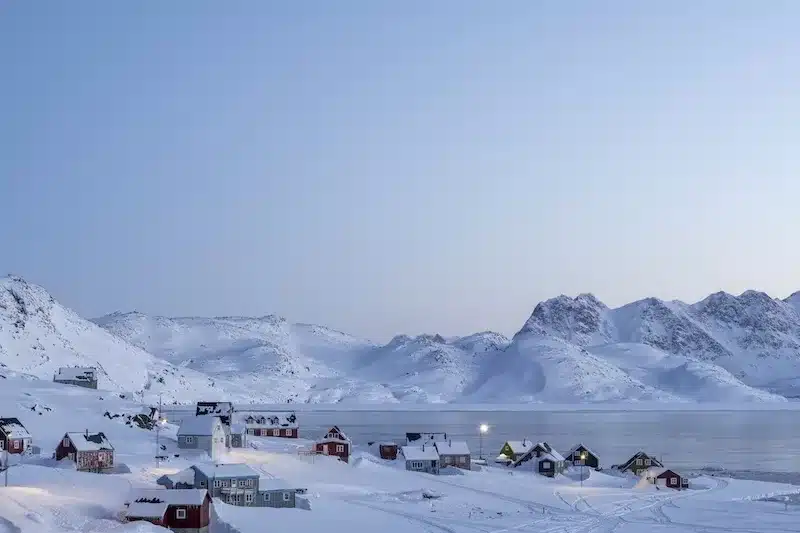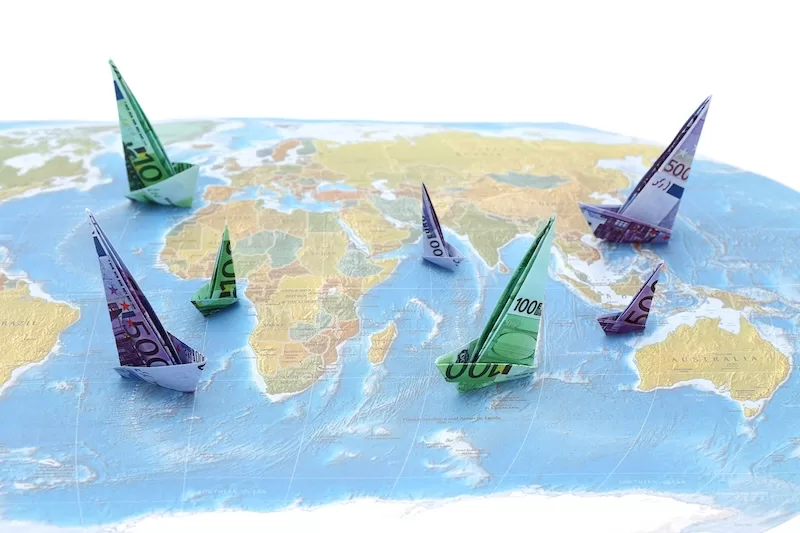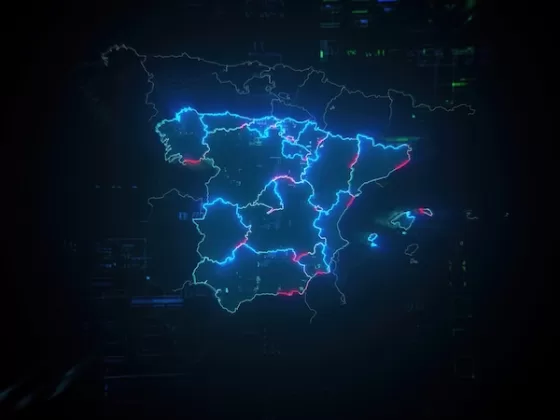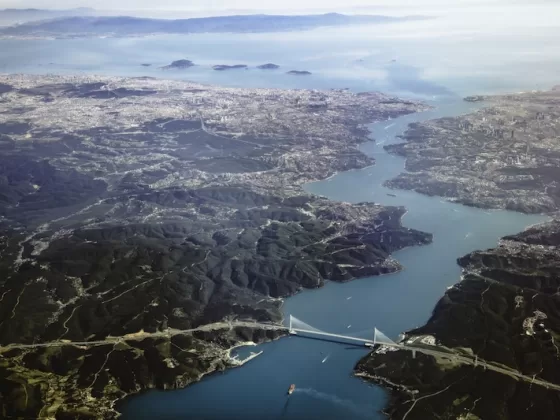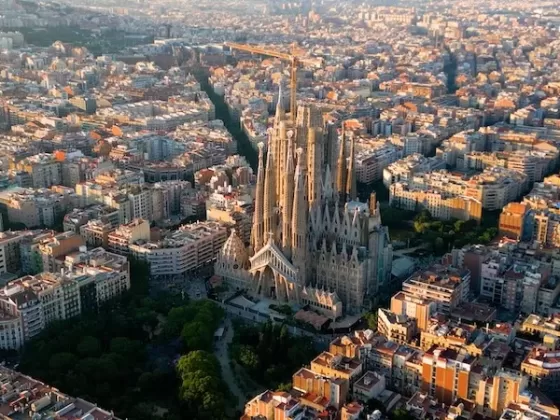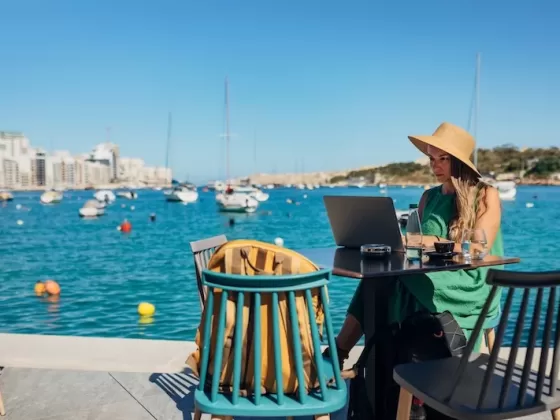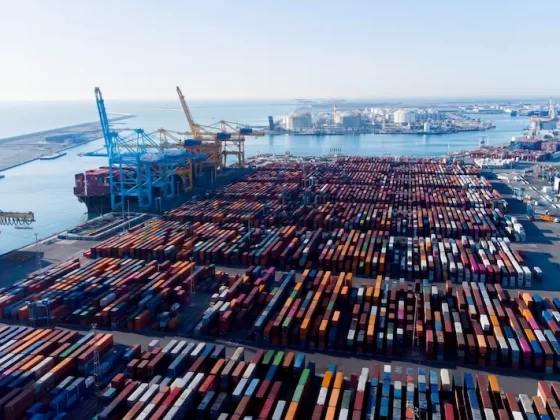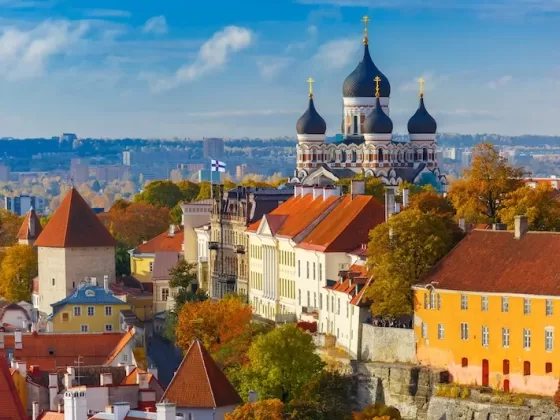There’s an old saying, often attributed to the Vikings, that “Iceland is green and Greenland is icy.” The joke is that no one had been there to prove if that was true or not. But today Greenland, once a place considered impossibly remote and unforgiving, is gaining attention for its raw beauty and undeniable allure.
For decades, Greenland was little more than a blip on the radar for most travelers, known mostly for its extreme climate, glacial terrain, and suffocating isolation. However, Greenland has undergone a striking transformation recently. Tourism is surging, interest is growing, and Greenland is fast becoming one of the most intriguing destinations on the planet.
So, what changed? Why are more travelers, expats, and adventure seekers making their way to this icy giant? The answer is part environmental, part economic, and part cultural—along with a surprising political twist involving none other than Donald Trump.
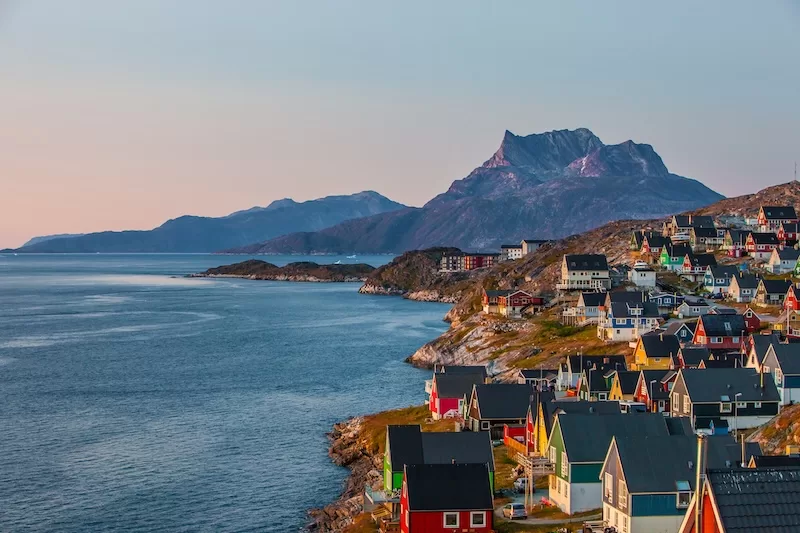
In the Spotlight
Few modern political moments have put Greenland in the headlines quite like Donald Trump’s 2019 suggestion that the United States should buy the island. A somewhat problematic and politically charged proposal in that Greenland has been a self-governing territory within the Kingdom of Denmark since 1953. At the time, Trump’s idea was widely dismissed—laughed off by Danish and Greenlandic officials as little more than a real estate fantasy. Yet, behind the absurdity was an undeniable truth: Greenland holds immense strategic and economic importance.
Trump’s offhand remark, as brash as it was, did something unexpected—it forced the world to take a closer look at Greenland. Suddenly, the Arctic island was trending. People who had never thought twice about it were Googling its history, learning about its geopolitical significance, and, for some, even considering it as a travel destination. It wasn’t just a frozen expanse on the map anymore; it was a place worth paying attention to.
Read more like this: Exploring the World’s Most Progressive Regions
Then, in December 2024, Trump doubled down. Calling U.S. ownership of Greenland “an absolute necessity” for national security, he reignited the debate in a way few saw coming. His renewed interest set off a fresh round of political posturing, culminating in the introduction of the “Red, White, and Blueland Act of 2025” by Representative Buddy Carter—a bill seeking to authorize negotiations for the purchase and even rebranding of Greenland. If the initial proposal was a joke, this time it came with paperwork.
Whether it is serious diplomacy or just another political stunt, the latest push has once again thrust Greenland into the international spotlight. Yet beyond the headlines, Greenland is already undergoing a transformation of its own, not just because of foreign ambition, but because the world is finally waking up to what it has to offer.
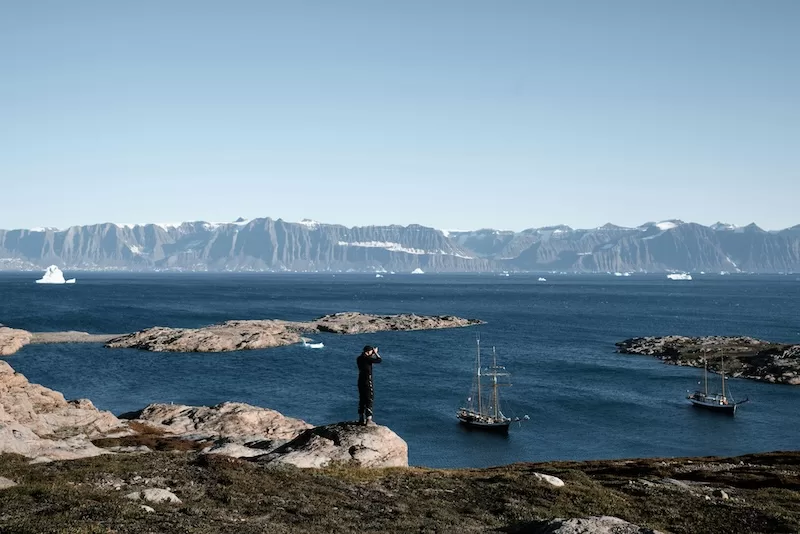
More Than Just Ice
Greenland has long been associated with its most dominant feature: ice. The country is home to the second-largest ice sheet in the world, covering about 80% of its landmass. But while glaciers and icebergs are undoubtedly part of the draw, Greenland is far more than an Arctic wasteland. It’s a place of striking contrasts. Colorful fishing villages set against snow-capped mountains, rugged fjords carved by ancient glaciers, and a surprising variety of wildlife, from musk oxen to humpback whales.
This raw, unspoiled beauty is a major reason for Greenland’s rising popularity. As global travelers seek out destinations that feel untouched and authentic, Greenland offers a rare opportunity to experience nature in its purest form. Kayaking among icebergs, hiking in remote tundras, and witnessing the Northern Lights in an environment nearly free of light pollution—these are the kinds of experiences that are drawing adventurous visitors in droves.
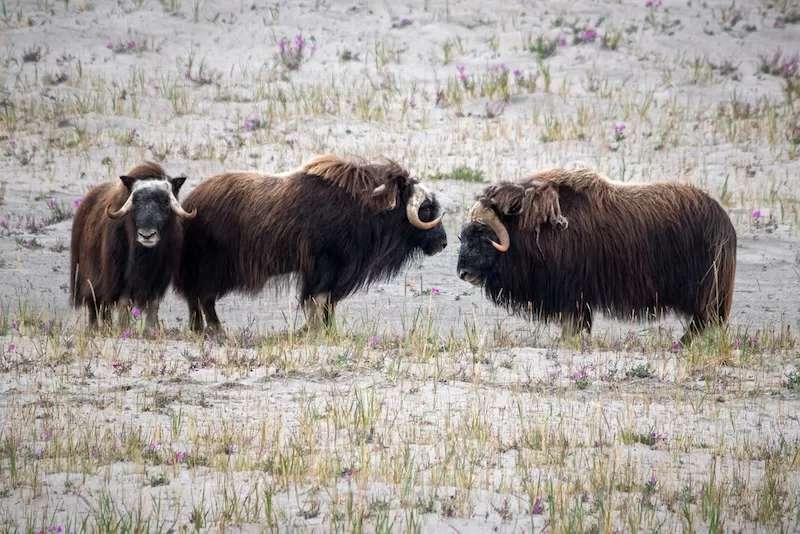
Double-Edged Sword
Ironically, one of the major drivers of Greenland’s tourism boom is also one of its biggest threats: climate change. As global temperatures rise, the ice sheet is melting at an alarming rate, altering the landscape and making Greenland more accessible than ever before. New fjords are being exposed, glaciers are retreating, and areas once locked in ice are now open for exploration.
For travelers, this means unprecedented access to parts of Greenland that were once off-limits. Cruise ships are venturing further into Arctic waters, guided treks are leading visitors onto ice sheets before they disappear, and eco-tourism initiatives are thriving. Some visitors are drawn by the urgency—the chance to see these dramatic landscapes before they change forever.
However, Greenland’s environmental fragility raises ethical questions. Is it responsible to promote tourism in a region already grappling with climate consequences? Many local tour operators are addressing this concern by emphasizing sustainable tourism with small-group expeditions, carbon-neutral travel options, and partnerships with indigenous communities to ensure that tourism benefits local populations without accelerating environmental damage.
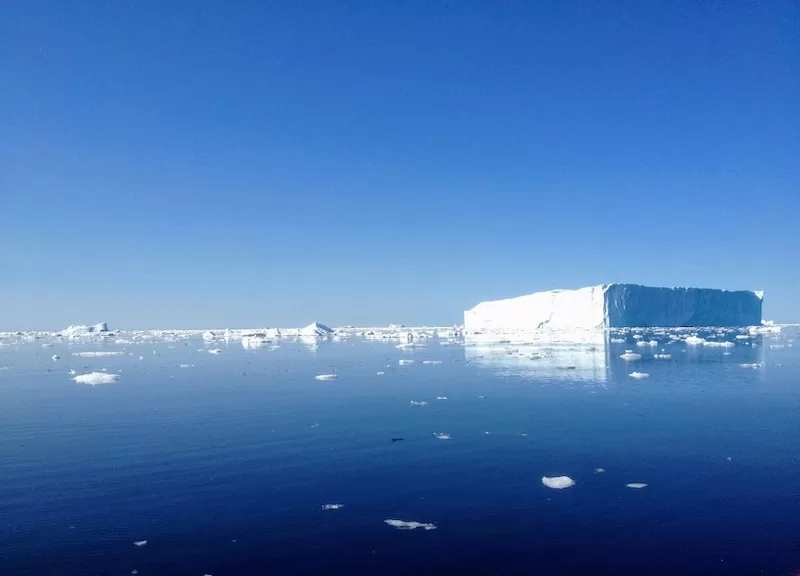
Greenland’s Growing Role
Beyond tourism—and the major reason Donald Trump is so excited about the island—Greenland is increasingly viewed as a land of untapped economic potential. As ice recedes, previously inaccessible natural resources including rare earth minerals, oil, and gas are becoming more viable for extraction. This has sparked interest from global superpowers, with countries like China and the U.S. eyeing Greenland’s potential wealth.
For expats, this economic shift means new opportunities. Greenland is still a small, sparsely populated nation (with fewer than 60,000 residents), but as infrastructure improves and investment increases, there’s growing interest from professionals in fields like environmental science, mining, and sustainable energy. Entrepreneurs, digital nomads, and researchers are finding reasons to consider Greenland not just as a travel destination but as a place to work and contribute to a country on the brink of transformation.
Arctic Lifestyle Allure
Beyond its landscapes and political intrigue, Greenland is also drawing visitors who crave a different pace of life. The country’s remote settlements, close-knit communities, and emphasis on outdoor living appeal to those seeking an escape from the hustle and bustle of modern urban life. The indigenous Inuit culture, with its deep connection to the land and traditions of survival, offers travelers a unique perspective on resilience and adaptation.
Read more like this: Global Roundup: Migration Battles, Travel Costs, and Expats in Flux
Greenland isn’t just a place to visit but a place to experience. The capital, Nuuk, is home to a growing arts and culinary scene, where traditional Greenlandic cuisine (think musk ox, Arctic char, and foraged herbs) meets modern gastronomy. The country’s festivals, such as the annual Nuuk Nordic Culture Festival, showcase a blend of Inuit traditions and contemporary creativity, attracting both locals and international artists.
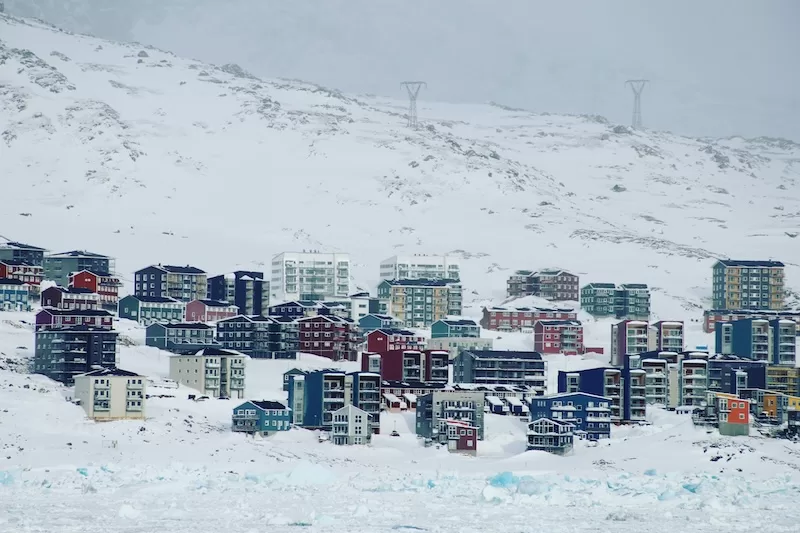
Greenland’s Changing Landscape
Greenland’s transformation from an overlooked Arctic outpost to a bucket-list destination is a testament to the shifting nature of travel. As more people seek out the extraordinary, the unspoiled, and the remote, Greenland stands out as one of the last true frontiers of adventure. Whether it’s the impact of climate change, the intrigue of global politics, or simply the magnetic pull of untouched wilderness, Greenland is capturing the imagination of travelers and expats alike.
The question now is: Will Greenland’s rise in popularity be sustainable? Or will the forces that draw people in—climate change, economic opportunity, and curiosity—ultimately reshape the very thing that makes it special? For now, Greenland remains a land of extremes, a place where nature reigns supreme, and where those who make the journey find themselves stepping into a world unlike any other.
————————
Isha Sesay is Escape Artist’s Associate Editor. Born in London, she has spent the past decade living and working across the globe, and now calls Barcelona, Spain, home.
